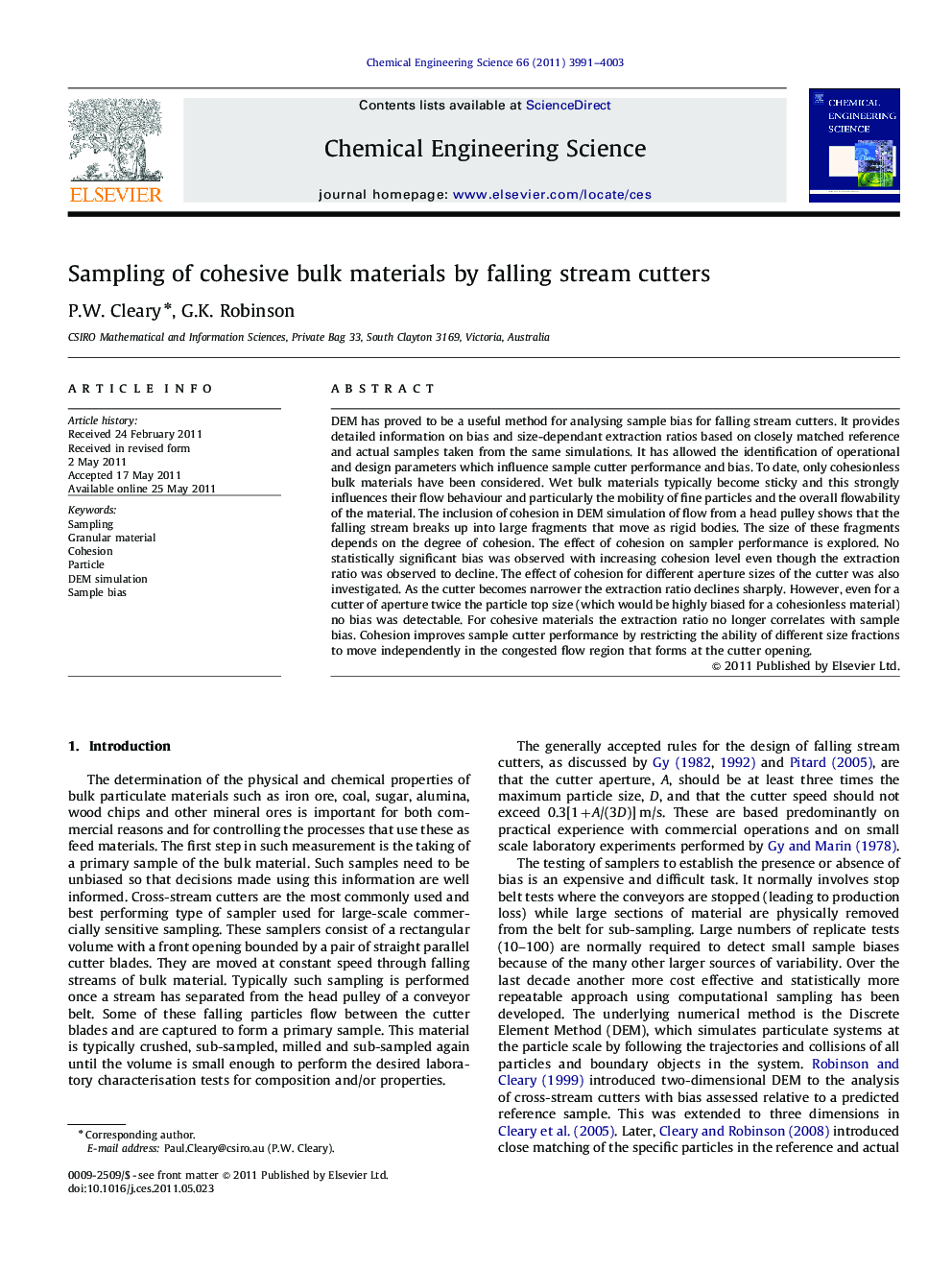| کد مقاله | کد نشریه | سال انتشار | مقاله انگلیسی | نسخه تمام متن |
|---|---|---|---|---|
| 156485 | 456933 | 2011 | 13 صفحه PDF | دانلود رایگان |

DEM has proved to be a useful method for analysing sample bias for falling stream cutters. It provides detailed information on bias and size-dependant extraction ratios based on closely matched reference and actual samples taken from the same simulations. It has allowed the identification of operational and design parameters which influence sample cutter performance and bias. To date, only cohesionless bulk materials have been considered. Wet bulk materials typically become sticky and this strongly influences their flow behaviour and particularly the mobility of fine particles and the overall flowability of the material. The inclusion of cohesion in DEM simulation of flow from a head pulley shows that the falling stream breaks up into large fragments that move as rigid bodies. The size of these fragments depends on the degree of cohesion. The effect of cohesion on sampler performance is explored. No statistically significant bias was observed with increasing cohesion level even though the extraction ratio was observed to decline. The effect of cohesion for different aperture sizes of the cutter was also investigated. As the cutter becomes narrower the extraction ratio declines sharply. However, even for a cutter of aperture twice the particle top size (which would be highly biased for a cohesionless material) no bias was detectable. For cohesive materials the extraction ratio no longer correlates with sample bias. Cohesion improves sample cutter performance by restricting the ability of different size fractions to move independently in the congested flow region that forms at the cutter opening.
► A cohesion stream falling from a head pulley breaks up into large fragments that move as rigid bodies.
► No significant bias is found for increasing cohesion but the extraction ratio declines.
► For cohesive materials the extraction ratio no longer correlates with sample bias.
► Cohesion improves sample cutter performance by restricting the mobility of fine particles.
Journal: Chemical Engineering Science - Volume 66, Issue 17, 1 September 2011, Pages 3991–4003